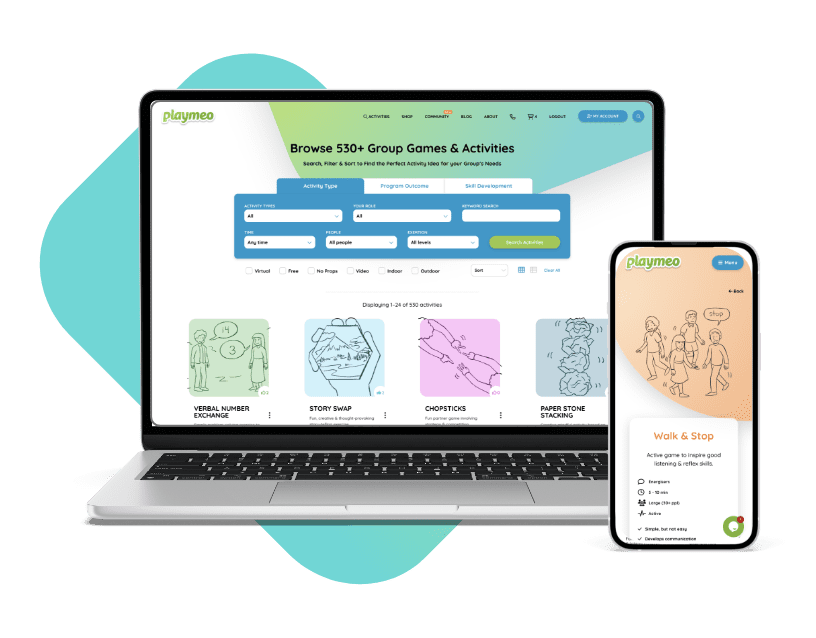Step-by-Step Instructions
Resources Premium
How To Play Narrative Premium
Practical Leadership Tips Premium
Social-Emotional Learning Premium
Health & Wellness Programming Premium
Popular Variations Premium
You Might Also Like... Premium
Useful Framing Ideas Premium
Reflection Tips & Strategies Premium
Source Premium

No Props No Problem
Brand NEW book featuring 150+ outrageously fun group games & activities. Scan QR codes to connect to tons of digital content including video tutorials.
Add to CartNew – TRY BEFORE YOU BUY
NEW – Latest Posts
Free eBook:
Top Ten Icebreakers & Group Games
Top Ten Icebreakers & Group Games
Download our free 28-page ebook jam-packed with outrageously fun activity ideas.

Wow, you’ve been busy!
You can open 1 more
activity for free.
Limit resets every 24 hours
or click below to get unlimited access.








Hi, I used this tool today as part of debrief of Moon Ball. It was wonderful, expecially for the more introverted teammates. It created space for every voice to be heard. The exercise offers so much choice and the opportunity to collaborte with various group members.
thanks for this thoughtful exercise.
Excellent stuff Jen, thanks for letting us know.
Love this!
Can i check, after each round of scoring, do they shuffle the cards again? so there’s three sets of shuffling?
Yes, good question David – the cards are shuffled between rounds so that each person receives a card that (a) that is not theirs, and (b) neither partner has seen before. This last point is easier when the group is large. The bottom line, be sure that the pairs are not reviewing their own card at any time.
Mark, thank you for this technique. I’m looking forward to using it.
Love this idea! Am going to put this in my “bag of tricks.”
Excellent Mary. I think it would come in very handy in your coaching. Have fun.